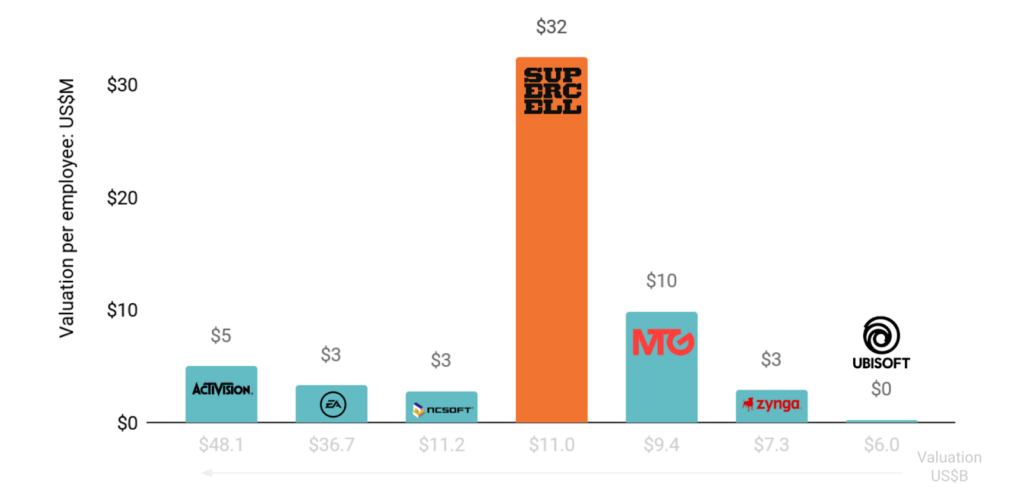Supercell, the company behind the massively popular Clash of Clans game, has one of the highest valuation per employee figures out there: they’re valued at $32mn per employee. That’s insane! How do they do it?

1/ What struck me is the sheer number of games they kill each year?
They seem to be killing 9 games for each game they release. Some of these games have been in development for years, and have the potential to be in the top 25 games worldwide. And, yet, they get killed.
2/ Why are they killed? It’s because these games don’t meet their internal benchmarks (primary of which is 30-day retention).
PS: This seems to be the norm with successful game studios. Rovio made 51 games before they struck gold with Angry Birds.
3/ Supercell’s mission is to make games that players play on forever (decades), so if the 30-day retention figure isn’t getting met, they get killed.
4/ The mission to make forever games does not come out of goodness. It is purely a good business decision. Because when games (like software) are launched globally, they’re not “done”. In fact, they start their long journey at launch, and require continual content release to generate revenue for multiple-years.
5/ Obviously, a game can be exciting for a few days, but if it doesn’t retain players for years, the game won’t make money.
So, the maniacal focus on making games that players play for decades is good business sense. And mission statements work best when they’re aligned with what’s good for business.
6/ Killing a game that has been in the works for years is obviously hard, so I have a lot of respect for this 90% kill rate. A key question here is: who decides to kill the game? And the answer is surprising.
7/ The killing decision is not made by the leadership, but in fact by the team that’s working on it.
When teams are communicated clear benchmarks to beat, they keep asking themselves this question: should we continue to iterate on the game and try to beat the 30-day retention number, or should we work on the next idea which would have better potential?
8/ In my conversations with experienced game teams, I observed that they attempt max 1-2 big rescues before killing the idea and start working on something else. Ideas are easy to come by, and most (creative) ideas fail.
So, the aim should be to kill ideas cheaply and early in the process, instead of getting wound up in sunk cost and trying one more pivot.
9/ Ultimately, I think the team working on a project needs to answer how excited are they about the current idea, and explore if their time is better spent on the next idea (incorporating all the learnings they’ve had from the first one).
10/ The team needs to ask: have they given their best to this project? If yes and the outcome is not satisfactory, time to move on.
Ideas can – and will change – but the team needs to remain, as only then learnings compound.
11/ By the way, the name supercell comes the way the company works. They’re groups of lots of small game development teams (each 10-15 people max). They’re given freedom to do whatever they want to – but success or failure is defined clearly in terms of metrics.

12/ Back to the main question: how does supercell have such a high valuation per employee?
It stems from two of their core principles: a) hire the best people; b) keep teams small;
13/ Building hit products with a team of just 10–15 people requires hiring absolutely the best people possible.
You can’t do that with people who are specialists or who’re learning on the job. You need exceptional people to deliver a top outcome.
Join 200k followers
Follow @paraschopra